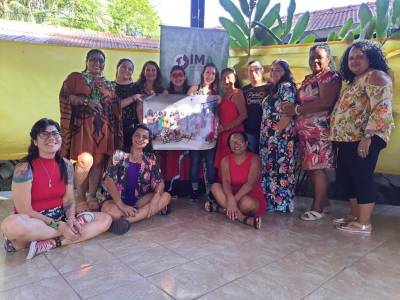The IRDR strives to produce world-leading research in disaster risk reduction through a multidisciplinary perspective for the long-term benefit of humanity.
Our public engagement, research impact and graduate teaching are underpinned by excellent academic research on the causes and consequences of risk, disaster and vulnerability and how to catalyse change.
The IRDR conducts research around the themes of disaster risk reduction and resilience, natural hazards, climate change risk and adaptation, cascading crises, humanitarian crisis response, GIS and remote sensing, law and economics, conflict and migration, catastrophe modelling, risk communication, warning, digital health in emergencies, urban resilience, and inclusivity including gender responsive resilience, in order to integrate education, research, innovation and enterprise for the long-term benefit of humanity.
Making impact
In the IRDR, we aim not only for our research to advance understanding and knowledge in risk and disaster reduction, but also for those findings to have an impact on reducing those disaster risks in the real world. Impact is global and local with long-standing relationships often shaping the most productive and impactful research. Hotspots for research impact include Nepal and Bangladesh as well as Europe and the UK. Government departments, UN agencies and non-governmental organisations are often the primary partners for uptake of research. Because IRDR brings together an array of science disciplines and methods its impact pathways are also diverse. Examples include:
Changing understanding
An open-access landslide awareness cartoon booklet in the Bengali language distributed to primary school students residing in the hilly regions of Bangladesh (Dr Bayes Ahmed).
Changing capacity
The Surface Urban Energy and Water Balance Scheme, a cutting-edge urban climate model utilised by ARUP to inform decision-making processes related to urban climate adaptation (Dr Ting Sun); an International Resource for Infection Control digital intervention and app has delivered timely information to front-line medical practitioners from 159 different countries through partnerships including The World Health Organization (Prof Patty Kostkova).
Changing policy
Informing policy processes in the UK Home Office from research on refugee and asylum-seekers protection (Dr Sonja Ayeb-Karlsson); collaborating with city governments in Nairobi, Istanbul, Quito and Kathmandu to enhance risk sensitive inclusive urban planning (Prof Mark Pelling and Dr Roberto Gentile).
Changing legislation
Providing case materials through the high courts of India and the National Green Tribunal for transnational legal remedies to climate justice in the Sundarbans (Dr Megnaa Mehtta); a co-authored a report for Phase I of the UK Covid Inquiry (Prof David Alexander).
Impactful research rests not only on scientific excellence but also on efforts to cultivate relationships, listen to diverse stakeholders (including those resisting dominant modes of thinking, practice or social organisation) and bring specific research finding to scale. The IRDR Annual Conference and Humanitarian Summit are important moments for building the key relationships and listening to practitioners and these efforts have been reinforced across many research projects, seminars and interactions with key research user groups.
Research achievements
In the last year, IRDR researchers have produced over 135 peer reviewed publications, presented at leading international conferences, been invited to speak at prestigious academic institutions, organised international meetings and conferences, undertaken tasks on editorial boards, joined as authors in influential international publications such as the United Nations Environment Programme’s GEO-7 report and brought in substantial research funding.
We were also delighted to welcome more academic and research staff through new appointments. The range of expertise now covered by the IRDR has been extended to include human rights law, economics, risk communication, humanitarian logistics, meteorological hazards, catastrophe risk modelling and geospatial science.
New research funding
In 2022–23, the IRDR continued to see success in securing research funding with academic and research staff winning several funding awards, including:
- Prof Mark Pelling became the Director of the UKRI-GCRF Tomorrow’s Cities Hub with Dr Roberto Gentile as a Co-I along with colleagues in CEGE and around 40 partners world-wide. This £20m project (2019–2024) has built a decision-support environment for risk informed, inclusive futures oriented urban development planning in low and middle-income countries and is now in the process of globalising learning through strategic partners such as the United Cities and Local Governments global network.
- Dr Louisa Acciari is the UK-PI for the project “Who Cares? Rebuilding care in the post-pandemic world”, a transnational project worth £1million gathering a consortium of six countries: Brazil, Canada, Colombia, France, US and the UK, exploring the impact of the Covid-19 pandemic on the care sector, specifically workers’ rights, labour conditions and health.
- Dr Gianluca Pascaroli (co-I) together with Dr Saman Ghaffarian, Prof Maureen Fordham, Prof Mark Pelling secured funding for project AGnostic risk management for high Impact Low probability Events (AGILE) from HORIZON Research and Innovation Action. Total budget €5.5M, UCL budget €800k.
- Dr Sonja Ayeb-Karlsson (PI) and Dr Yulia Ioffe (Co-I) won 100K, from BIICL (Modern Slavery PEC) project entitled 'Uncovering the Hidden Dangers: The Risk of Human Trafficking for Unaccompanied Asylum-Seeking and Refugee Children in Home Office-Operated Hotels' in partnership with ECPAT UK.
- Dr Mohammad Shamsudduha won as co-I funding to investigate ‘Climate Adaptation and Resilience in Tropical Drylands (CLARITY)' from the Climate Adaptation and Resilience (CLARE) programme funded by the Foreign, Commonwealth & Development Office (FCDO) and the International Development Research Centre (IDRC), Canada. The £4.7 million project brings £500k to UCL and £50k to IRDR. He also secured £11k from Research England UCL QR Policy Support Fund towards project ‘Improving water-supply resilience in Bangladesh through research and policy engagement (RESIPY)’.
- Dr Roberto Gentile won as PI 80,000€ (in kind) from Horizon Europe/ERIES for project ENhancing state-dependent FRAGility through experimentally validated Energy-Based Approaches (ENFRAG).
- Prof David Alexander, won as PI, UCL and Tōhoku University Strategic Partner Funds for project ‘Environmental and Energy Resiliency for Disaster Risk Reduction in Japan’, £5000 for an eight-month project.
- Dr Estella Carpi won UCL Research Culture Award (£2000).
- Dr Yulia Ioffe won as PI £5000 from the UCL Global Engagement Fund for the project on sexual and gender-based violence as a weapon of war in Ukraine, looking at accountability and protecting survivors in Poland.
Other current projects
Mosquitoes populations modelling for early warning system and rapid response public by health authorities correlating climate, weather and spatial-temporal mobile surveillance data
Funder: UKRI UK Research and Innovation
Lead: Prof Patty Kostkova
Building resilient cities for heat waves
Funder: NERC Natural Environment Research Council
Lead: Dr Ting Sun
Urgency with inclusion in global climate adaptation finance: why measurement matters
Funder: MRC Medical Research Council
Lead: Dr Susannah Fisher
Gender responsive resilience and intersectionality in practice (GRRIP) – Networking plus partnering for resilience
Funder: ESRC Economic and Social Research Council
Lead: Prof Maureen Fordham
Women’s livelihoods in vulnerable coastlines
Funder: AXA Research Fund
Lead: Dr Megnaa Mehtta
2020 Reducing RISK AWAREness and perception gaps to build resilience
Funder: EC H2020 European Commission Horizon 2020
Lead: Prof Maureen Fordham
Active fault slip-rates and earthquake recurrence controlled by stress transfer and viscous flow
Funder: NERC Natural Environment Research Council
UCL Lead: Prof Joanna Faure Walker
UCL Grand Challenges
Our research is aligned to the UCL Grand Challenges, an initiative of the UCL Vice-Provost (Research, Innovation & Global Engagement) that seeks to bring UCL’s academic expertise to bear on pressing societal challenges by integrating knowledge and evidence from across disciplines.
This year, the IRDR won two Grand Challenges awards:
Prof Joanna Faure Walker, with PhD student Rebekah Yore and Prof Adam Harris (Psychology), led a project to investigate earthquake and tsunami warnings. The award, won in 2022, culminated in a fieldtrip to Japan, in partnership with Tohoku University in March 2023..
Dr Sonja Ayeb-Karlsson was part of a team that won funding for a pilot project that explores the interlinkages between two pressing crises: violence against children and climate change, together with environmental degradation.
IRDR projects were showcased in the UCL Grand Challenges public exhibition, which took place in the spring.
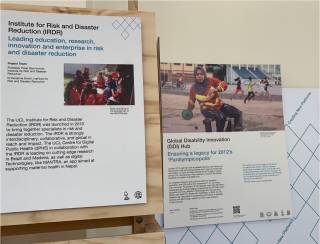 One of a number of IRDR UCL Grand Challenges projects showcased at the public exhibition.
One of a number of IRDR UCL Grand Challenges projects showcased at the public exhibition.

Research highlights
- Millions of farmers “replumb” world’s largest delta
- Collective groundwater pumping by millions of farmers in Bangladesh has created vast natural reservoirs underground that rival the world’s largest dams, sustaining irrigation that has transformed this previously famine-prone country to a food-secure nation, research co-led by Dr Mohammad Shamsudduha found.
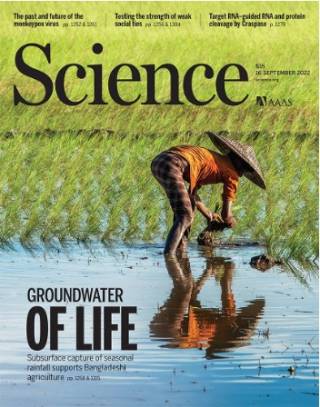
Published in Science, the study explores the combined impact of 16 million smallholder farmers pumping shallow groundwater during the dry season to irrigate rice paddies in the Bengal Basin of Bangladesh between 1988 and 2018.
The study revealed that by lowering groundwater levels through dry season pumping, leakage from rivers, lakes and ponds replenishing groundwater was spurred during the subsequent monsoon. This capture of surface water not only allowed groundwater levels to recover but, in doing so, helped to reduce flooding. Read full story.
- Future Indonesian Tsunamis: Towards End-to-end Risk quantification (FITTER)
The FITTER project has developed the first high-resolution tsunami risk model for Indonesia merging geophysics and economics, capable of estimating economic losses from local and regional tsunami hazard. The project uses a catastrophe modelling framework with a key innovation being the estimation of vulnerability to livelihoods and health using household survey data. The methods used are applicable to cases outside Indonesia and to hazards beyond tsunamis. The information provided by the model supports risk-informed decision making for Disaster Risk Management and Disaster Risk Financing. The work can also enable quantifying the potential benefits of investing in early warning systems supporting buy-in from government agencies implementing such systems.
The team included Dr Rozana Himaz, Daim Syukriyah and Khonsa Zulfa from UCL IRDR, collaborators from UCL Statistical Science, Bath University and the Insurance Development Forum and were supported by researchers from the National Research and Innovation Agency, Indonesia (BRIN) and Oasis Loss Modelling Framework (Oasis LMF). This three-year project was funded by the Lloyd's Tercentenary Research Foundation and Lighthill Risk Network.
The project workshop that took place in Bandung, Indonesia, on 10–11 November 2022 was important for dissemination of findings and creating impact pathways. It brought together science, economics and stakeholders to share the innovations of the tsunami risk model and the benefits of open risk modelling for improving risk management. The workshop was attended by over 75 people, with 15 speakers from the FITTER project, the Insurance Development Forum, financial sector, and Indonesia scientific and disaster management agencies. The attendees represented several departments of BRIN, Bandung Mitigasi HUB, Meteorological Agency, National Disaster Management Authority, National Planning Agency, Disaster Risk Initiative, Fiscal Policy Agency, Indonesian Tsunami Scientists Society, the World Bank and six Indonesian universities.
- Disasters avoided
Prof Ilan Kelman co-leads a NASA-funded project demonstrating the benefits for everyone, as well as money saved, when proactively avoiding disasters, especially through the effective use of Earth observations. The work compiles, verifies, and shares compelling good-news examples of potential disasters which could have happened, but did not, due to evidence-based action.
- Performing planet activism
UCL Culture funded two artists to work with Prof Ilan Kelman. Meg Hodgson wrote and performed the one-person show MOONFACE, a satire about mining on the moon. Heloise Tunstall-Behrens composed and conducted The Work of Many Hands, a choral work bringing messages of hope about the future under climate change. Incorporating Ilan's science, both performed at UCL's Grant Museum in February 2023.
- Earthquake timing and clusters
Can we understand earthquake timing and clustering? Earthquakes occur along faults in the Earth's crust, but they do not occur on individual faults with regular time periods - if they did then we would be able to predict when and where they occur. Instead, faults can lie dormant for several thousands of years and then host several earthquakes over the next few thousand years. Until now, there have been limited physical models backed by quantitative data to support possible theories to explain this long-term earthquake timing.
Using cosmogenic dating of fault scarps in Greece and Italy, and supported by a NERC Standard Grant "Active fault slip-rates and earthquake recurrence controlled by stress transfer and viscous flow", Prof Joanna Faure Walker is part of a team of geologists from UCL, Birkbeck and Plymouth with partners across Europe deciphering the possible mechanisms responsible the long-term timing of earthquakes. Through mapping and modelling faults, PhD students David Gregory (Core Logic and IRDR) and Sam Mitchell (Birkbeck and IRDR) are aiming to better infer where earthquakes will occur, how large they will be, how earthquakes on one fault affect the timing and magnitude of earthquakes on neighbouring faults, and to what extent historical catalogues of earthquakes can be used to determine what may occur in the future. If we can better model earthquake hazard and associated uncertainties, we can improve risk assessment and risk reduction, particularly where faults have not hosted large earthquakes recently leading to less awareness of the hazard and hence higher vulnerability, less mitigation, and thus higher risk.
- Safety-seeking behaviour in response to warnings
What triggers safety-seeking behaviour in response to warnings? PhD students Rebekah Yore and Anastasia Chou, working with Prof Joanna Faure Walker, are seeking to understand how people respond to warnings so as to provide an evidence base to help design warning messaging. This work has been supported by a UCL Grand Challenge of Human Wellbeing small grant, bringing together researchers from IRDR, UCL Department of Experimental Psychology and Tohoku University, including IRDR Visiting Associate Professor Anawat Suppasri.
- MOISS: Mosquito ovitraps IOT sensing system
Mosquito infestation mainly depends on several environmental parameters, including climate, weather and water (i.e., physicochemical parameters). Standard techniques for immature mosquito surveillance are based on remote sensing and weather stations as primary data sources for environmental variables and collecting water samples by environmental health agents assessing the water quality. Such tools may lead to misidentifications, especially when comprehensive surveillance is needed.
In this project, Prof Patty Kostkova and her team co-authored and co-developed a mosquito Ovitraps IoT Sensing System, an Internet of Things-based System for continuous, real-time and autonomous environmental monitoring. The system surveillance apps using gamification and citizen science co-developed with local stakeholders for reporting locations of water breeding points in Brazil and Madeira.
The system provides a real-time approach for monitoring the weather and the water in order to evaluate the most suitable mosquito habitats.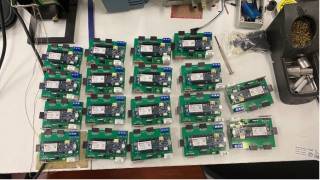
Assembly and testing phase of MOISS units at the lab.
- Mathila art
Dr Punam Yadav received another seed funding from the UCL Global Engagement Fund to start a novel project on Mithila art in Nepal. This project was also supported by The UKRI Collective Fund award 'Gender Responsive Resilience and Intersectionality in Policy and Practice (GRRIPP project) - Networking Plus Partnering for Resilience.
Mithila art is an ancient art form of art, practiced for centuries in the Mithila region of Nepal and Bihar of India, which has a rich history and cultural significance. Although there are many forms of Mithila Art, Mithila painting, traditionally done by women, has received significant attention in recent years.
Mithila paintings had been an integral part of everyday life in the lowlands of Nepal. This was traditionally done by women on the walls of their own homes, especially during the festive months when the walls were freshly painted by natural materials. There was a pride in having these arts on their walls, depicting local culture (e.g., wedding), tradition (e.g., festivals), nature (birds, picklocks) and emotions (e.g., celebrations). However, it had no commercial value because it wasn’t bought or sold. However, with changing livelihood due to climate induced migration (shift from agriculture to remittance economy), changing rural infrastructure (from mud house to concrete buildings), rapid urbanisation and changing gender roles, Mithila art is disappearing from the walls of people's homes.
In recent years, some organisations have tried to revive Mithila art by training local women, helping sell their products and/or buying their products. This renewed focus on the Mithila art has led to increased awareness. However, it has also led to commercialisation, urbanisation and NGOisation of the Mithila art. Most importantly, despite increased attention to the Mithila art, there has been no research on the impacts of these shifts; the disappearance of the Mithila art from the walls of people’s homes to the re-emergence of it in a commercialised form on the walls of the rich.
In May, two workshops and three focused meetings were conducted in Kathmandu and Province 2 with policy makers, artists, journalists and local men and women. The aim of these workshops and meetings was to explore the reasons behind the disappearing practice of Mithila paintings from the rural villages and emergency of it in commercialised form in the capital city and towns. A global network of Mithila art has been established. The next step is to conduct a pilot study.
An example of Mathila art.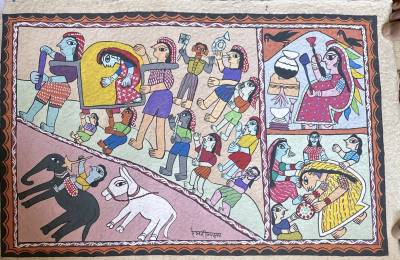
- How does violence against children intersect with climate change (VACCC)
The project, led by Dr Sonja Ayeb-Karlsson and Dr Simone Datzberger (UCL Institute of Education), seeks to provide insights on how the disruption of ecosystems (human-induced and due to climate change), affect children’s exposure to and experience of violence (physical, emotional, sexual, structural and repressive) in LLMICs (Low- and Low-Middle Income Countries). It centralizes local perspectives of VAC in LLMICs affected by CC and investigates how CC disadvantages children in LLMICs through increased violence exposure.
Almost every child on earth is exposed to at least one major climate or environmental hazard, and 80 million children are believed to be exposed to a total of six overlapping environmental shocks or stresses, such as: heatwaves, cyclones, floods, water scarcity, vector-borne diseases or air pollution. Scientists estimate that children born in 2020 will experience a two- to sevenfold increase in extreme weather events, particularly heat waves compared with people born in 1960. Around 160 million children currently live in areas experiencing high levels of drought, and about 503 million children are exposed to a high risk of floods due to extreme weather events such as cyclones, hurricanes and storms, as well as rising sea levels. By 2040, 1 in 4 children are predicted to be affected by extreme water stress. According to the World Health Organization more than 1 in 4 deaths of children under 5 years of age (1.7 million) are attributable to unhealthy environments. Simply put, millions of children, mostly in LLMICs, experience disease, disability, and other harm due to degrading ecosystems, toxic pollution, and climate change. At the same time Violence Against Children in LLMICs is significantly higher if compared to high-income countries. It is estimated that in Sub-Saharan Africa 83% of children experience emotional, 64% moderate and 43% severe physical abuse, whereas in HICs 10% of the children experience emotional, and an estimated 4% to 16% physical violence.
The current literature body show how environmental stress and climatic changes tend to increase and worsen violence against children, both within and outside the home. In this project, we look at the many ways that climatic stress harms children across the globe and the policy frameworks aimed at protecting them from structural violences. We outline the various types of violences that children experience in the context of climate and natural hazards on a global level through a review of the current research and literature.
- Tomorrow’s Cities
Tomorrow’s Cities catalyses a transition from crisis management to multi-hazard risk-informed planning and decision-making for cities in low-and-middle income countries. The five-year, global, interdisciplinary hub has been funded by GCRF-NERC since 2019 as part of UK Overseas Development Assistance strategy, to put research at the heart of efforts to deliver the United Nation’s Sustainable Development Goals.
With a team of more than 100 scientists, policy makers and community groups, Tomorrow’s Cities has completed a four-year period of intensive research with partners in Istanbul, Nairobi, Kathmandu and Quito. This led to the project’s core approach – Tomorrow’s Cities Decision Support Environment (TCDSE) - which provides cities opportunities to test policy decisions and understand implications for future risk with an emphasis on equity.
The core steps of the TCDSE are interdisciplinary and based on knowledge co-production:
- Goal setting and scoping
- Future visioning
- GIS scenario building
- Computation of multi-hazards and risk
- Risk evaluation
- Collective decision-making
April 2023 marked the beginning of work in new cities in Palestine, Nepal, Bangladesh and Tanzania, with new partners including the United Cities and Local Government network and the Asian Disaster Preparedness Centre.
The IRDR team includes Hub Co-Director (Prof Mark Pelling); leads on risk agreement (Dr Roberto Gentile) and future visioning (Dr Thaisa Comelli); Dar es Salaam co-ordinator (Prof Fatemeh Jalayer); post-doc researcher on risk evaluation (Dr Yahya Gamalaldin); and PhD students on the politics of risk in Nairobi (Mark Ojal) and disability DRR policy in Nepal (Abby Ewan). IRDR collaborates closely with the UCL Maths and Physical Sciences Faculty (Dr Michel Wahome, Science and Technology Studies) and the Department of Civil, Environmental and Geomatic Engineering (Prof Carmine Galasso and Dr Gemma Cremen), making UCL Tomorrow’s Cities' largest institutional partner.
The team has produced dozens of local and international publications, including a special issue in the International Journal of Disaster Risk Reduction.
 Close
Close


